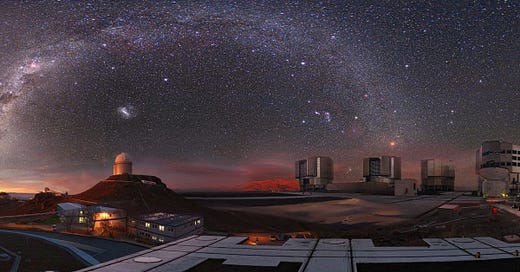Today’s stories include: A coded radio message from Mars will ping radio telescopes on Earth Today to The SETI observatory on the farside of the moon, and more.
Discovery of 69 New Exoplanets Using Machine Learning, reports NASA Astrobiology. "The 69 newly discovered exoplanets vary widely in their characteristics, including size, orbital period and proximity to their host stars and can improve our understanding of the population of exoplanets in the universe. “
"The quantum egg that gave rise to everything"--Is the Universe a quantum fluctuation?--Perhaps the whole Universe is the result of a vacuum fluctuation, originating from what we could call quantum nothingness, argues Big Think.
NASA Astrobiology: Beyond Mediocrity: How Common is Life?
Inside the New Missions to Jupiter's Moons--Spacecraft will explore hidden oceans and the possibility of life on the moons of Jupiter, reports Scientific American.
This Is Not an Extraterrestrial Signal. This Is Just a Test.--You too could be Jodie Foster as astronomers organize a practice run in communicating with aliens, reports Dennis Overbye for The New York Times. "One part dress rehearsal for an event that astronomers hope will one day occur, a coded radio message from Mars will ping radio telescopes on Earth on Wednesday."
The most ambitious alien-hunting mission in history: a dedicated SETI observatory on the farside of the moon, reports Supercluster.com. "The three-day conference that began on May 22nd in Australia is an important first step in that direction and will mark the first time that the requirements for a SETI lunar observatory mission have been rigorously defined."
Why Einstein’s E = mc² is only half of the equation--Einstein's most famous equation is E = mc², which describes the rest mass energy inherent to particles. E = mc² only describes the "rest mass energy" of massive particles. If your particles are in motion or have no rest mass at all, the other half of the story is absolutely essential., reports Ethan Siegel for Big Think.
Could AI be the Great Filter? explores NASA Astrobiology.
Curated by The Galaxy Report Editorial Staff




